Madoryx pseudothyreus
Grote, 1865
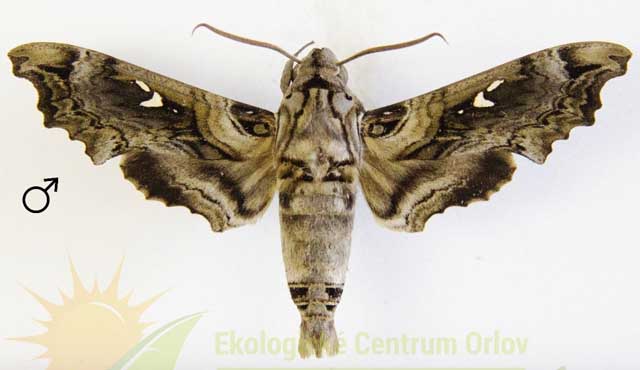
Madoryx pseudothyreus pseudothyreus male, 65mm, Cuba.
This site has been created by Bill Oehlke.
Comments, suggestions and/or additional information are welcomed by Bill.
TAXONOMY:
Family: Sphingidae, Latreille, 1802
Subfamily: Macroglossinae, Harris, 1839
Tribe: Dilophonotini, Burmeister, 1878
Genus: Madoryx Boisduval, [1875] ...........
Species: pseudothyreus Grote, 1865
|
DISTRIBUTION:
The False-windowed Sphinx, Madoryx pseudothyreus
(Wing span: 2 5/8 - 2 3/4 inches (65 - 70mm)), flies in tropical climates: The West Indies and central Florida. Cuba is the specimen type locality.
The wing margins are scalloped. The upperside of the forewing is brown with dark brown and tan markings.
The forewing has a V-shaped white spot near the center of the costa.
Based on research by Melichar and Rezac, 2014, those specimens encountered in southern Florida are subspecies
Madoryx pseudothyreus floridensis
and those specimens encountered in the Bahamas are subspecies Madoryx pseudothyreus bahamensis with nominate pseudothyreus probalby limited to Cuba.
Speimens from other nearby islands are likely bahamensis.
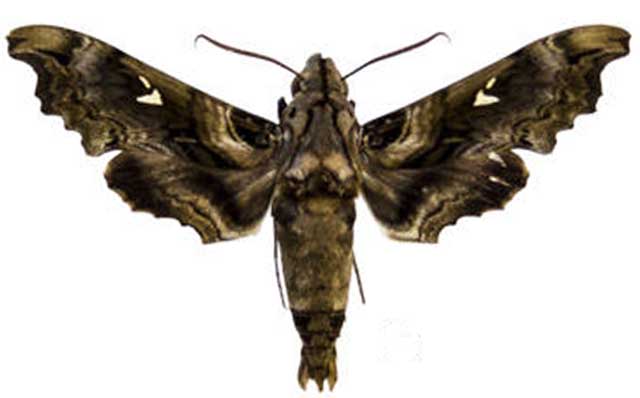
Madoryx pseudothyreus pseudothyreus male, Cuba.
Sphingidae Museum Pribram.
I notice in the two nominate subspecies above from Cuba, that the lower projection of the forewing pre-apical black marking extends much further outwardly into the
elongated apex than it does in subspecies floridensis. I do not know if that is a consistent character that could be used to distinguish between the two subspecies??
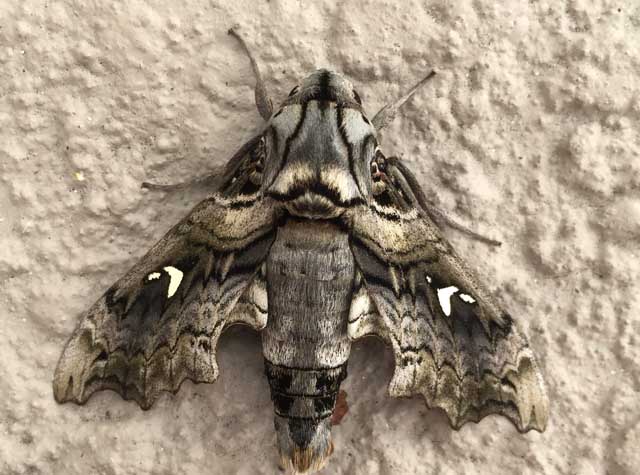
Madoryx pseudothyreus floridensis, Marco Island, Collier County, Florida,
March 7, 2016, courtesy of David Wright.
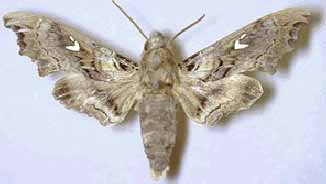
Madoryx pseudothyreus floridensis courtesy of Paul Opler.
FLIGHT TIMES:
There are several flights throughout the year in the tropics.
ECLOSION:
Moths emerge from pupae in thin-walled cocoons under leaf litter.
SCENTING AND MATING:
Females call in the males with a pheromone released from a gland at the tip of
the abdomen. Adults nectar at flowers, including petunia and Asystasia gangetica at dusk.
EGGS, LARVAE, PUPAE:
Females probably lay eggs on evening primrose (Onagraceae). In Florida larvae have been found on
Black Mangrove (Avicennia germinans).
Larvae pupate in cocoons spun amongst leaf litter.
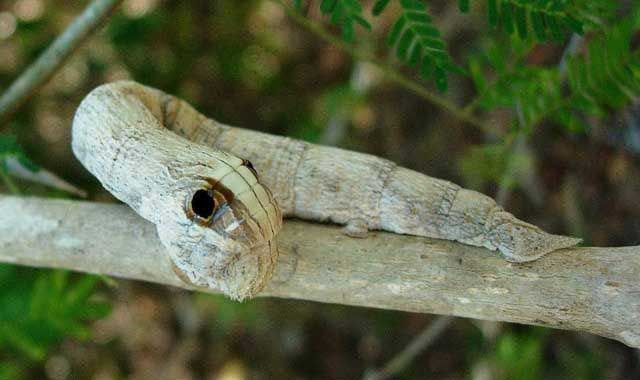
Madoryx pseudothyreus bahamaensis fifth instar, on black mangorve,
Bahamas, courtesy of Bart Coppens.
Although the larva depicted immediately above is from the Bahamas, and would be classified as Madoryx pseudothyreus bahamensis, I suspect it is almost identical
to the larva of the nominate species.
Return to U. S. A. Table
Return to Sphingidae Index
Return to Dilophonotini Tribe




